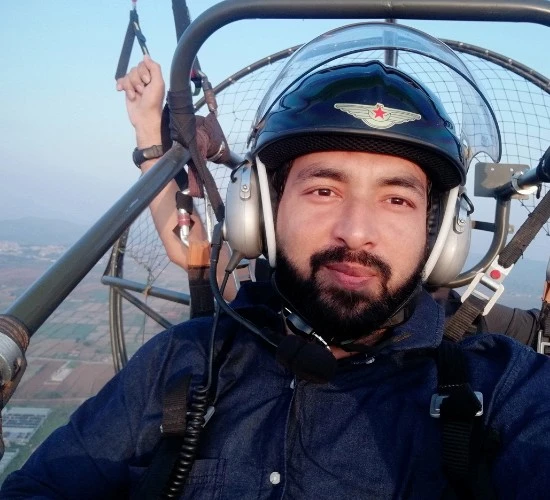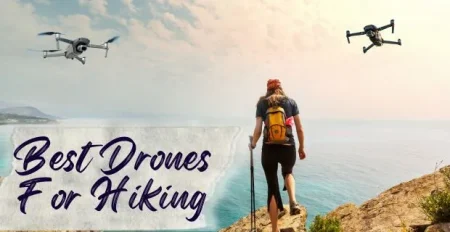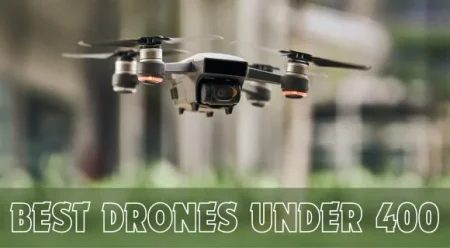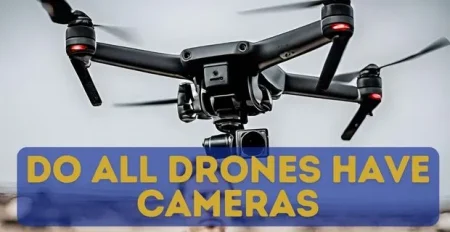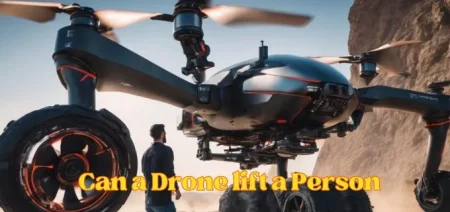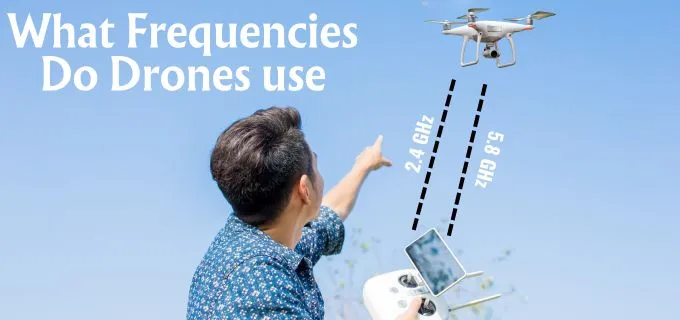
Have you ever wondered how drones work and how they can fly around without crashing into things? Well, one cool thing that makes drones tick is “frequencies.” Imagine drones using it as a special language to talk to their controllers and do their jobs.
What Frequencies Do Drones use
This easy-to-understand article will explore what these frequencies are all about and What Frequencies Do Drones use.
Basics of Radio Frequencies:
First, let’s understand what these radio frequencies are. You know that light travels in waves, right? Radio frequencies are also waves, but they’re not light that we can see. They’re a type of energy that can carry messages and information. they use these frequencies to talk to each other and share messages. It’s similar to how your phone sends signals to call or message your friends.
Why Drones Need Radio Frequencies:
As you need to talk to your friends to coordinate plans, drones also need to communicate. They use radio frequencies to talk to their controllers, usually, people using a remote control. This way, the people can tell the drone what to do, where to go, and even see what the drone sees through a camera. Imagine playing a video game, but you’re flying a real drone instead of controlling a character on a screen!
Different Frequencies for Different Drones:
The fancier drones that cost more money usually work with two frequencies: 2.4GHz and 5.8GHz. They also use GPS L1, which helps the pilot control the drone. These drones can fly far away, up to 5km or sometimes even 12km. Some drones can switch between these frequencies or let the pilot change them. They might use one frequency to fly the drone and the other to send back pictures.
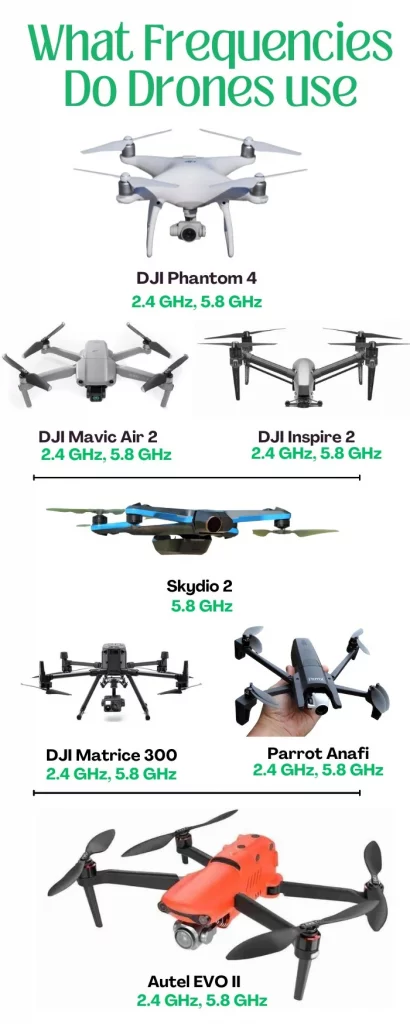
When people build drones as a hobby, they usually pick frequencies like 433MHz or 915MHz. These can make the drone go even farther but have a downside. They need to let them to send back videos quickly and with good quality. Sometimes, they can also make talking to the drone a bit harder.
The Issue with Jamming:
Now, the problem is that these four frequencies are used by more than just drones. Those who enjoy playing with remote control cars, boats, and airplanes also use these frequencies. Plus, these frequencies are important for other things too:
2.4GHz: This frequency is used for Wi-Fi, which you probably use for the internet at home. Things like wireless keyboards and microwaves also use it.
433MHz: This one is used by people who play with radios and for things like remote controls at home, opening gates, and even baby monitors.
915MHz: Walkie-talkies and some radio lovers use this. It’s also used for some things in the sky and sea.
5.8GHz: This one helps with weather forecasts and military stuff. It’s also used for Wi-Fi and watching things from far away.
So, many different things rely on these frequencies, not just drones. That’s why messing with or using them only for drones is tricky. They’re like busy highways with many vehicles trying to use them simultaneously.
Radio Frequency Bands Used by Drones:
Drones use different types of radio frequency bands to communicate and operate efficiently. These frequency bands are like special paths in the air that drones follow to send and receive signals. Let’s explore common radio frequency bands and why they’re important for drone communication and control.
ISM Bands:
Now that we know why drones need radio frequencies let’s talk about the different kinds of frequencies they use. Some frequencies are like “free zones” that anyone can use without special permission. These are called ISM bands. They often use frequencies like 2.4 GHz and 5.8 GHz. Things like Wi-Fi routers and microwave ovens also use these frequencies.
While they’re easy to use, they can sometimes get crowded and cause problems for their signal.
| Drone Model | Frequency Range (GHz) |
| DJI Phantom 4 | 2.4 GHz, 5.8 GHz |
| DJI Mavic Air 2 | 2.4 GHz, 5.8 GHz |
| DJI Inspire 2 | 2.4 GHz, 5.8 GHz |
| DJI Mini 2 | 2.4 GHz, 5.8 GHz |
| DJI Matrice 300 | 2.4 GHz, 5.8 GHz |
| Parrot Anafi | 2.4 GHz, 5.8 GHz |
| Autel EVO II | 2.4 GHz, 5.8 GHz |
| Yuneec Typhoon H | 2.4 GHz, 5.8 GHz |
| Skydio 2 | 5.8 GHz |
| Autel Robotics EVO Lite | 2.4 GHz |
Licensed Frequency Bands:
Other frequencies need special permission to use. These are called licensed bands. Think of them like reserved lanes on a highway. These frequencies are more reliable because not everyone can use them. Professionals and companies often use these bands for their drones because they want their signals to be consistent with other devices.
Cellular Networks and Beyond:
Do you know how your phone uses networks to call or text people? Drones can do something similar using cellular networks, like 4G and 5G. This lets them fly much farther than just using a remote control. It’s like giving the drone a superpower by connecting it to the internet. But there are challenges, like ensuring the network is strong enough to control the drone from far away.
Detecting Drone Frequencies: A Simple Explanation
If you want to determine the frequencies that drones use, you can use an RF sensor. This sensor is like a special device that listens to signals in the air. Drones talk to their controllers using certain frequencies, like how you talk on the phone using a signal. The most common frequencies for drones are 2.4 GHz and 5.8 GHz. These are like channels that drones and their controllers use to chat.
The RF sensor is like a radio that can hear these special signals. It listens carefully to see if it can hear any drone messages. When it listens to a message, it tries to understand who sent it and what the message is about. It looks at different ways drones and controllers talk, like different languages.
How Drones Talk: RF Communication Protocol
When drones talk to their controllers, they follow certain rules. It’s like a secret code they use to understand each other. It is called an “RF Communication Protocol.” It helps drones and controllers know how to send and receive messages. The messages can be about where the drone should go or what it sees. The protocol is like a guide that makes sure everyone understands the messages.
Types of RF Sensors:
Two main types of sensors can find drone signals.
Protocol Decoder:
This type helps us understand what drones are saying. It listens to the messages and figures out important things like where the drone is and how fast it’s going. It’s like a translator that helps us know what the drones are up to.
RF Detector:
This type helps us recognize different types of drones. Just like each person has a unique voice, each drone has a unique way of talking. The RF detector remembers how different drones talk and can tell us which drone is nearby based on its “voice.”
Spectrum Sharing and Dynamic Allocation:
Imagine a playground where everyone wants to play, but there’s only so much space. This is similar to how the radio spectrum works. As more drones take to the skies, more space for everyone’s signals might be needed. So, scientists are working on ways for drones to share the frequencies they need. It’s like taking turns on the playground so everyone can play.
Advanced Communication Techniques:
Scientists are also considering using super high frequencies called “millimeter waves” for drones. These waves can carry much information, like how a firehose sprays a lot of water. This could make drones work even better, especially for quickly delivering packages. They’re also considering using special networks and satellites so drones can go far and do amazing things.
FAQs
Long-range drones usually use frequencies like 2.4GHz and 5.8GHz. These frequencies help the drone communicate with the remote control from far away. Some drones can even go as far as 5km or even 12km using these frequencies.
Yes, drones use radio frequency (RF) signals to work. These RF signals are like invisible messages that they send and receive. They use these signals to talk to the controller and share information like where to fly and what they see through their cameras.
They use radio waves to communicate. Radio waves are a type of energy that travels through the air and carries the drone’s messages. It’s similar to how radio stations send music and news to your car radio.
they can face interference when other devices use the same frequencies they use. For example, devices like Wi-Fi routers, remote control cars, and even microwaves can create noise and make it hard for drones to communicate properly. This interference can affect the it’s performance and control.
“If you are preparing for the Microsoft Windows 10 exam then you can visit these Examlabs. “
Conclusion:
So, now you know all about these special radio frequencies that help drones fly and do all the cool things they do. Like how you use your phone to stay connected, drones use these frequencies to talk, send pictures, and get orders from their pilots. It’s like a secret language that lets drones and their controllers understand each other. As technology keeps growing, we’ll see even more exciting ways that drones use these frequencies to do incredible things in the future.
